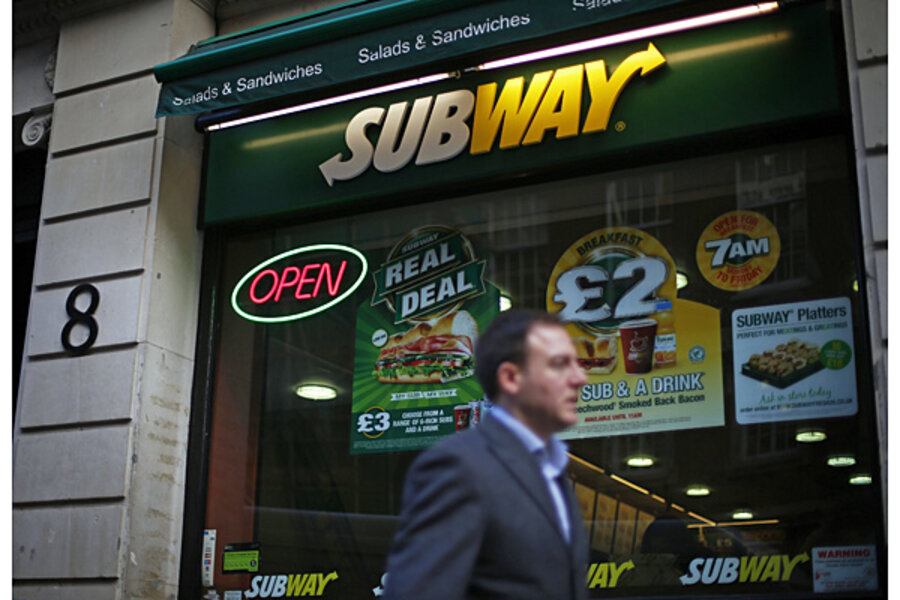Subway chemical, also in yoga mats, removed from sandwich bread
Loading...
What sort of ingredients do you expect in your sandwich bread? Flour, yeast, and maybe a few whole grains are probably the first things that come to mind. “A chemical found in yoga mats” is likely not, which led to a major publicity nightmare for Subway this week.
The global sandwich chain said Thursday that it would be removing such a chemical from its bread, a week after a petition called for its removal. The petition was organized by Vani Hari, a popular food blogger who runs the website Foodbabe.com. The chemical, called azodicarbonamide, is a plastic additive used as a bleaching agent in Subway’s bread and used in other products to increase elasticity. Azodicarbonamide is legal in the US and Canada, and deemed safe by the Food and Drug Administration. But the World Health Organization has warned of a link between the chemical and certain medical issues, and Subway does not use it in bread sold in its European and Australian locations.
“Azodicarbonamide is the same chemical used to make yoga mats and shoe rubber… this is not eating fresh!” Ms. Hari wrote last week in a blog post, which also linked to a petition urging Subway to stop using the chemical in North America. The post was widely shared on Twitter and Facebook, and the petition has over 68,000 signatures to date.
Subway says that it was in the process of removing the chemical before Hari’s post went viral. "We are already in the process of removing Azodiacarbonamide as part of our bread improvement efforts despite the fact that it is USDA and FDA approved ingredient," the company said in a press statement. “The complete conversion to have this product out of the bread will be done soon." Subway wouldn’t reveal how much Azodiacarbonamide was used in the bread’s production.
Subway is the biggest sandwich chain in the world, with more locations worldwide than McDonald’s. Being viewed as a fresher, healthier option than its fast food competitors is key to its brand, and something that it has been very successfully cultivating both in the United States and abroad. The chain’s advertising mainly features Olympians and other high-profile athletes, like speedskater Apolo Anton Ohno and NFL quarterback Robert Griffin III. Subway has a partnership with the American Heart Association and recently pledged to join Michelle Obama’s “Partnership for a Healthy America” campaign.
So it was in the chain’s best interest to resolve the chemical issue as soon as possible. On Thursday, Subway’s official Facebook page was still littered with calls to “stop using dangerous chemicals” in its bread, and “stop poisoning us!” to cite a few.
This isn’t the first time that Hari, the food blogger, has leveraged her popularity to affect change at the corporate level. Last year, she successfully petitioned Kraft to remove yellow food dyes from three of its macaroni and cheese products targeted at children, and a 2011 blog post eventually prompted Chick-fil-A to remove dyes and high fructose corn syrup from its sauces.
"The power lies within the food companies to make changes quickly," she told Good Morning America Wednesday. "You don't have to wait for the government.








